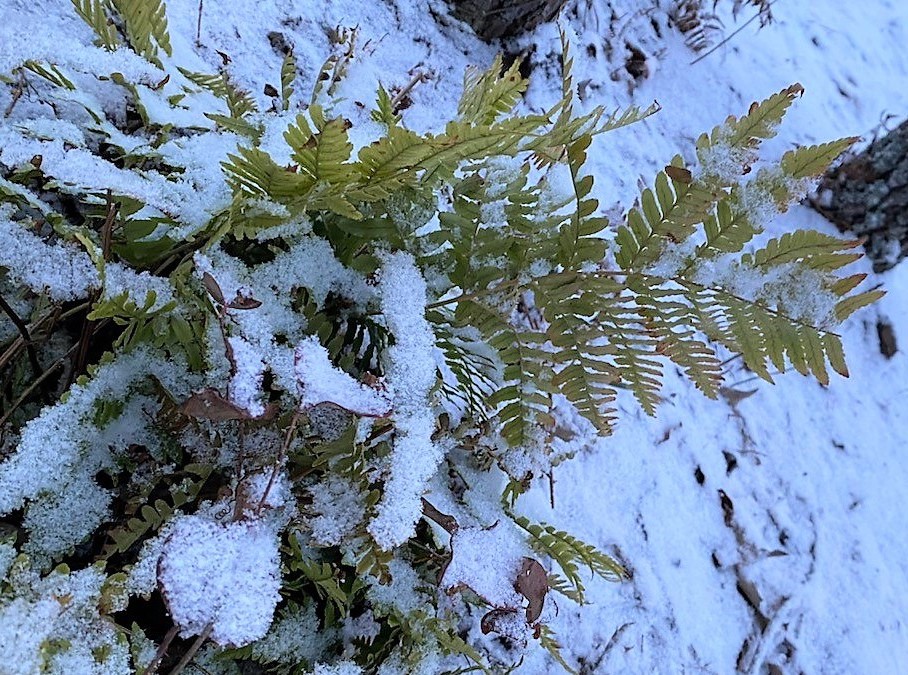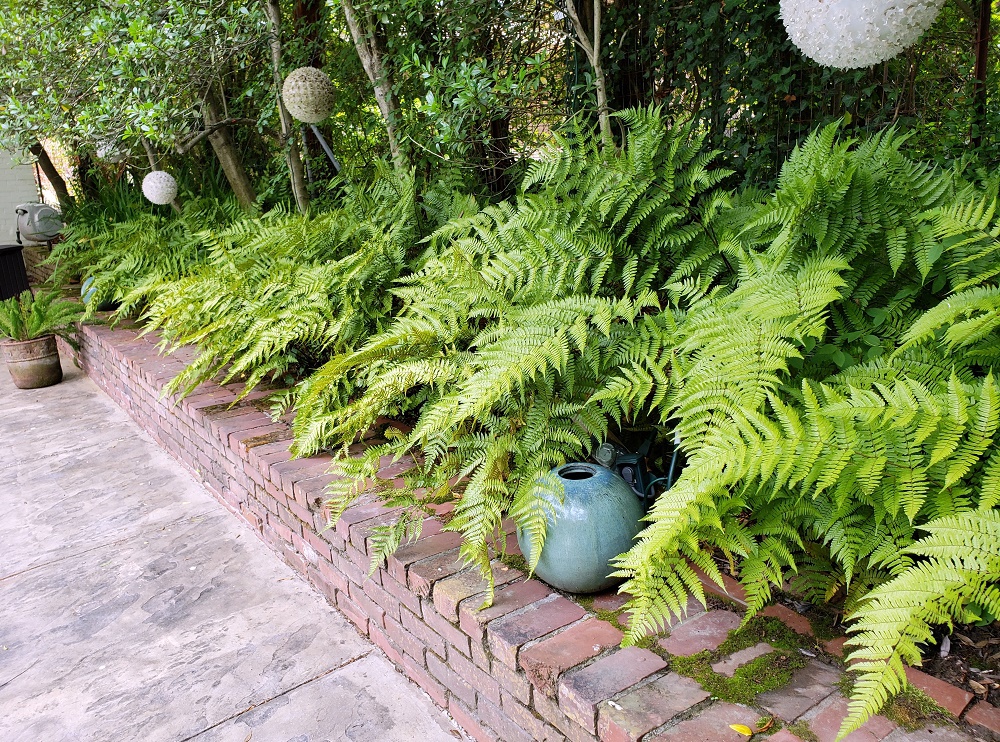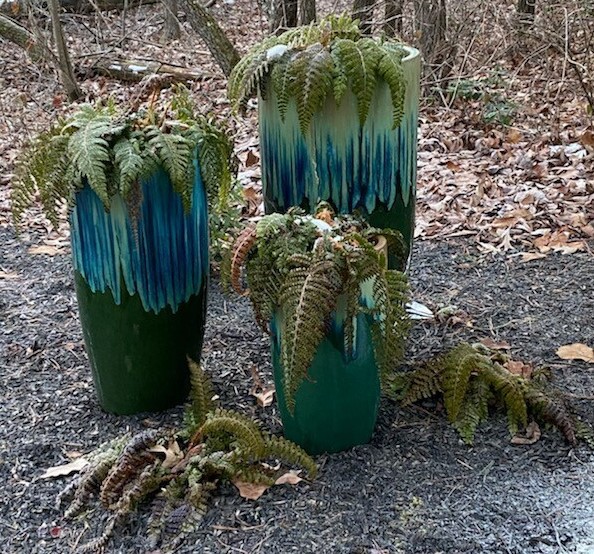
UT Gardens’ February 2021 Plant of the Month
Of all the plants we enjoy today in our gardens and in the wild, ferns are some of the most ancient. They are one of the oldest groups of plants on Earth, with a fossil record dating back more than 350 million years. About 10,500 fern species are cataloged, with others still being studied. More may yet be discovered.
Ferns can be found growing in very diverse environments. They can grow in woodlands, swamps, stream banks, from rock crevices, and alongside waterfalls. Those growing on woodland floors tend to be the best ferns for gardens and landscapes.
Unlike most plants, ferns do not have flowers or seeds. They primarily reproduce by spores, usually found on the underside of their leaves. Ferns, which can be clump forming or spreading, are also able to reproduce by rhizomes. They can be divided every 3-5 years in spring or fall. Clump-forming varieties may become hollow in the center indicating it is time to divide that plant.

Most ferns grow best in partial shade. Evergreen varieties are more tolerant of deep shade. Ferns can be found that will grow in dry soils as well as wet, but some prefer well-drained soil that is evenly moist and high in organic matter. Most also prefer acidic soil. Our native Christmas fern is adaptable and can tolerate soil that is dry and slightly alkaline. Ferns can be planted anytime the ground is not frozen, but spring or fall is ideal when rain is plentiful. When planted in the proper location, they are generally free of pests and disease. Slugs and snails tend to be the most common problems and crown rot can develop if drainage is poor for species that thrive in a drier environment. On the bright side, ferns tend to be deer resistant.
Often found growing wild on woodland floors, ferns are an obvious choice for a shade garden. Fronds can be lacy or leathery, offering nice texture when used alone or when combined with the large leaves of hosta and hellebores, the colorful foliage of heuchera or caladium, or the dainty blossoms of bleeding heart. Ferns can be used as a ground cover to soften the hard edges of water features, rocks and paths, and they are wonderful filler for containers. They also provide great greenery for cut flower arrangements.

Several hardy fern varieties are evergreen. Evergreen ferns recommended for Tennessee include the Holly fern, Tassel fern, and Autumn fern:
• Cyrtomium falcatum (Japanese Holly fern) – coarse, leathery, dark-green fronds resembling the leaves of a holly. Stiff, upright vase shape. Grows 1-2 feet high by 2-3 feet wide.
• Polystichum polyblepharum (Tassel fern) – shiny, dark-green fronds from central crown. Outward spreading, vase shaped clump. Grows 1-2 feet high by 1-2 feet wide.
• Dryopteris erythrosora (Autumn fern) – new fronds emerge coppery-pink in spring contrasting with older bright green fronds. Vase shaped clump. Grows 1-2 feet high by 2-3 feet wide.
Other ferns that may suit your Tennessee landscape include:
• Dryopteris cycadina (Shaggy Shield fern) – stiff, leathery, light-green fronds with an arching habit. Clump forming. Grows 1.5 feet high by 3 feet wide.
• Polystichum acrostichoides (Christmas fern) – native. Dark-green, leathery fronds. Clump forming. Grows a foot high by 2 feet wide.
• Polystichum luctuosum (Korean Rock fern) – glossy, dark-green fronds. Vase shaped. Grows 1 foot by 1 foot.
Specimens of these ferns, and many other cultivars, can be viewed at each of the UT Gardens sites across the state: Knoxville, Crossville and Jackson.
The UT Gardens includes plant collections located in Knoxville, Crossville and Jackson. Designated as the official botanical garden for the State of Tennessee, the collections are part of the UT Institute of Agriculture. The Gardens’ mission is to foster appreciation, education and stewardship of plants through garden displays, educational programs and research trials. The Gardens are open during all seasons and free to the public. For more information, see the Gardens website: utia.tennessee.edu/state-botanical-garden.